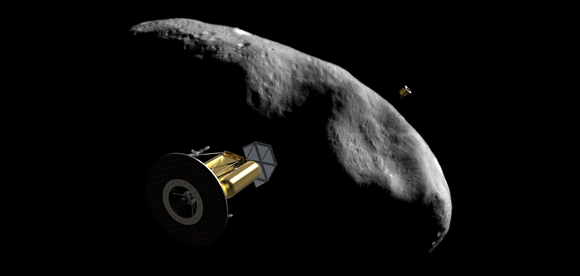For those of you so inclined on Wednesday, April 24th at 11 a.m., Pacific Daylight Time (2 p.m. Eastern), Planetary Resources is celebrating its one year anniversary since announcing its plans to begin mining asteroids. And you are invited to join them for a live hangout online.
They plan to provide a year in review, current developments of their Arkyd series of spacecraft, (telescopes, interceptors, prospectors and extractors) and future plans for exploring, prospecting and mining.
Planetary Resources intends to exploit what it calls the “low-hanging fruit” of the Solar System. The “fruit” are the Near Earth Asteroids or NEOs. There are close to 9,000 known NEOs with 1,000 new ones discovered every year. Using low-cost robotic spacecraft the company intends to assess NEOs for composition and accessibility and then begin to visit, with robotic mining technology, those deemed commercially viable.
Mining in space will be a lot different from mining here on Earth. For instance the most precious resource the company will seek immediately is water. Water in the form of ice is abundant in asteroids. For example, Ceres, the largest of the asteroids in the Asteroid Belt is almost certainly almost entirely ice. But although the Dawn spacecraft may go and study Ceres, Planetary Resources isn’t interested that much in the science associated with such an asteroid mission. Instead its goal will be to turn smaller icy NEOs it assesses and visits into life supporting materials (water and oxygen) as well as hydrogen fuel for future missions. And for stony, metallic NEOs it assays, it plans to use the materials and precious metals it extracts to fund its operations and build a space infrastructure, and do it all at a handsome profit.
So if you want to hear first hand from Planetary Resources on their first anniversary send your RSVP and listen in on Wednesday.











[…] space mining path in the previous decade proclaiming missions to mine asteroids for their wealth. Planetary Resources was to go out and find water among the Asteroid Belt and harvest it for hydrogen for space […]